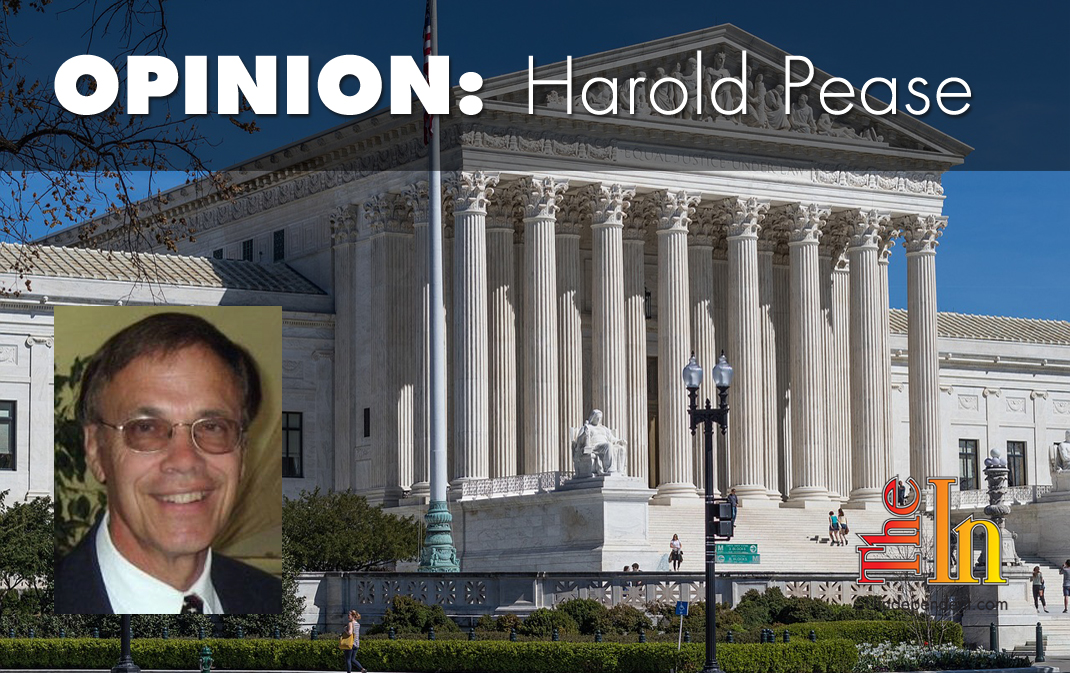
The Supreme Court is not so easily politicized
A confirmation of Justice Brett Kavanaugh to the Supreme Court, because he may have once opposed Roe V. Wade on abortion, is not likely to be as threatening as portrayed by our Democratic media.
In the first place, justices are only allowed to choose from what is brought before them — cases having survived tedious, time-consuming, and expensive lower court scrutiny. So if Justice Kavanaugh wanted to reverse Roe V. Wade, he would have to wait for a case that would allow that. Theoretically, that could take a lifetime — if it were to even happen at all.
Should Congress pass a law that all nine justices personally believe to be unconstitutional, they possess no power collectively or individually to bring it before the high court for review themselves. There exists in the Constitution no judicial general review or oversight of the legislative branch, only in laws contested by a litigant proving damaged by it or treaties. The Constitutional Convention nixed this notion because it would give the court too much power. Nor was it allowed an advisory position with respect to legal issues; each branch could do this for itself. It was to be an independent branch existing solely to adjudicate cases brought to the court by others.
Should no one oppose a law or treaty outside the Constitution because opposition to it is too expensive, time-consuming, and tedious, it becomes constitutional by default, becoming in time the basis for additional law that should be equally unconstitutional. Still, it remains a lesser problem than it would be had the court oversight of all legislation.
In the second place, justices are limited to just nine classes of cases in which they can adjudicate. The Legislative Branch is limited to just 18 areas where it was empowered to write law (Article I, Section 8), and the Executive branch is limited to just 11 listed areas of performance (Article II, Sections 2 and 3). Remember that the purpose of the Constitution is to limit government from ruling everybody and everything.
Article III, Section 2 begins: “The judicial Power shall extend to all Cases, in Law and Equity, arising under this Constitution, the Laws of the United States, and Treaties made, or which shall be made, under their Authority.” The Supreme Court is limited to nine case types. Constitutionally, every case before the court had to first meet one of these criteria or the court must decline adjudication.
Why the case types? Should not the Supreme Court adjudicate everything? Because it could adjudicate only conflicts in federal law and treaties as decided in the Constitutional Convention and as per Congress’s list of areas for approved law (Art. I, Sec. 8). Because when the Constitution was created, two co-equal existing governments were recognized, called federalism, with the states governing domestically and the federal branch governing nationally and internationally. State courts were to adjudicate everything else not listed as federal power in the Constitution and as noted in Amendment 10.
Then the Founding Fathers divided this list into original and appellate jurisdictions — one total and the other only partial. “In all Cases affecting Ambassadors, other public Ministers and Consuls, and those in which a State shall be Party, the supreme Court shall have original Jurisdiction.” Why? Because the first deals entirely with matters of foreign consequence, and the second, the state, is the head of the other co-equal governments under federalism.
The Constitution continues, “In all the other Cases before mentioned, the Supreme Court shall have appellate Jurisdiction, both as to Law and Fact, with such Exceptions, and under such Regulations as the Congress shall make.” Now, Congress is in charge and clearly can participate should it choose to. “You may not take up this case at this time’” or “you may do so given the following regulations.” This is an essential part of the “checks and balances” of the Constitution, which have unfortunately never been used.
Unfortunate is Congress’s failure to provide this balance; worse is the failure of many justices to pay any attention to the list provided, which has been the case for most of the past century. Far worse is the tendency of so many justices to just make up an interpretation based on no law.
Supreme Court Justice Clarence Thomas said, “Let me put it this way; there are really only two ways to interpret the Constitution: try to discern as best we can what the framers intended or make it up.” On making it up, he added, “No matter how ingenious, imaginative, or artfully put, unless interpretive methodologies are tied to the original intent of the framers, they have no more basis in the Constitution than the latest football scores”(Wall Street Journal Opinion, Oct. 20, 2008).
Today, the court is evenly divided between those who make it up and those who follow what the Founding Fathers wrote. At least Justice Kavanaugh has shown that he will not make it up.



